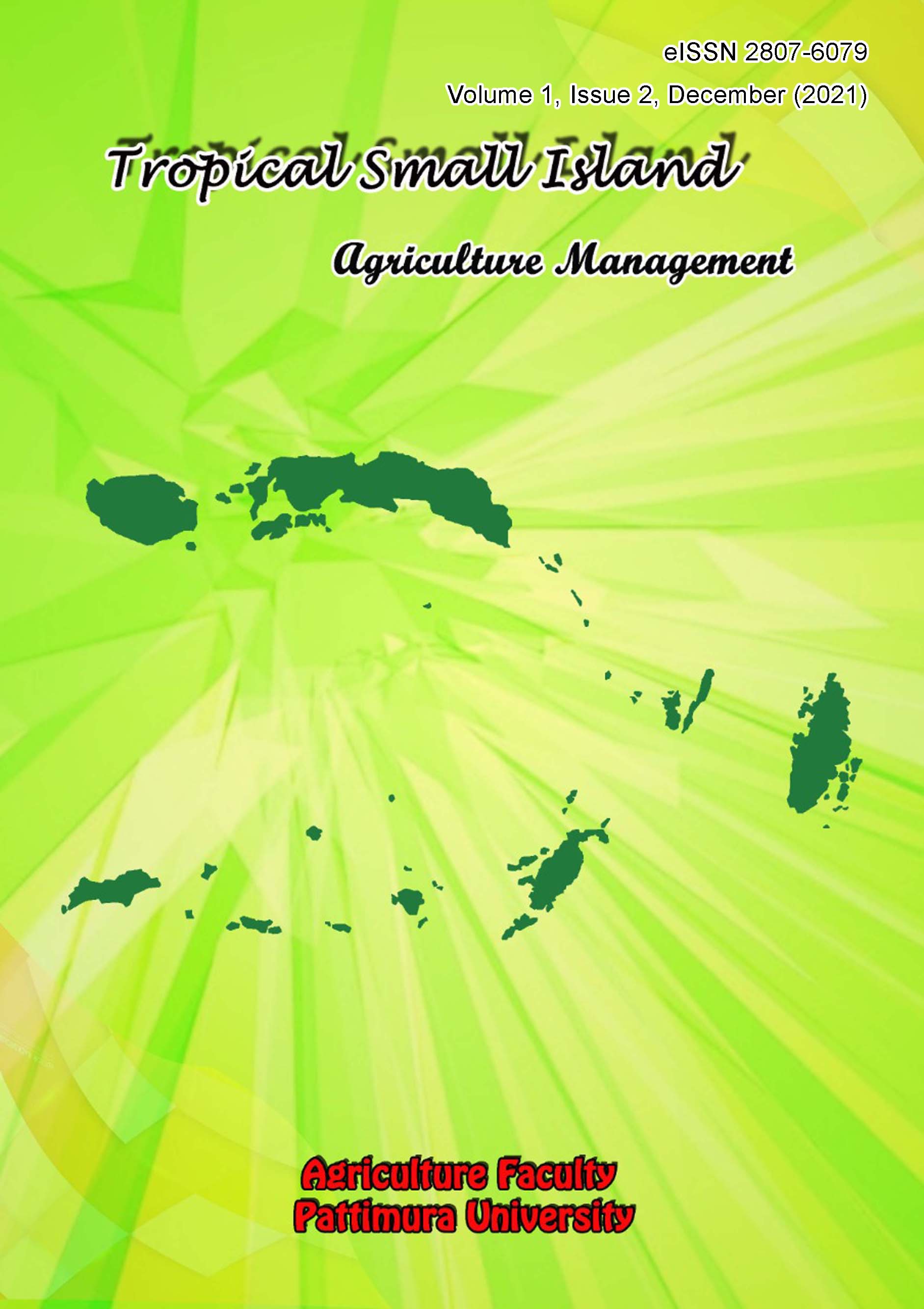Karakteristik Kimia dan Organoleptik Nugget Ikan Tenggiri dengan Penambahan Tepung Daun Kelor
Chemical and Organoleptic Characteristics of Tenggiri Fish Nuggets with Moringa Leaf Flour Addition
Abstract
This study aims to determine the chemical and organoleptic characteristics of mackerel fish nuggets with the addition of Moringa lea flour. This study was designed using a completely randomized design with the addition of Moringa leaf flour consisting of 4 treatment levels, namely 0%, 5%, 10%, and 15% with 3 replications. Observation was made on the analysis of the chemical properties of fish nuggets with the addition of Moringa leaf flour, namely ash content, water content, fat content, protein content, and carbohydrate content. Followed by organoleptic testing, organoleptic testing was carried out using hedonic tests and hedonic quality which included color, aroma, taste, and texture. The treatment with the addition of 5% concentration of Moringa leaf flour on mackerel fish nuggets is the best treatment with chemical characteristics, namely the chemical characteristics of mackerel fish nuggets with the addition of Moringa leaf flour, namely ash content of 3,22%, water content 59,30%, fat content 1,61%, protein content 20,71% and carbohydrate content 15,14%. While the hedonic organoleptic characteristics of color 2,15 (like), aroma 2,05 (slightly like), taste 2,35 (slightly like), texture 2,3 (somewhat like). The hedonic quality is color 2 (slightly green), aroma 1,7 (no sceny of moringa), taste 1,95 (no taste of moringa), texture 2 (slightly chewy).
Downloads
References
Afrianto. E. & Liviawaty, E. (1989). Pengawetan dan Pengelolaan Ikan Yogyakarta: Penerbit Kasinus.
Aminah, S., Ramadhan. T., & Yasin, M. (2015). Kandungan nutrisi dan sifat fungsional tanaman kelor (Moringa oleifera). Buletin Pertanian Perkotaan, 5(2), 35-44.
Anwar, F., Latif, S., Ashraf, M., & Gilani. A.H. (2007). Moringa Oleifera: A Food Plant with Multiple Medicinal Uses.
Andarwulan, N., Kusnandar, F., dan Herawati. 2011. Analisis Pangan. Dian Rakyat: Jakarta
Augustyn, G.H., Tuhumury, H.C.D., & Dahoklory, M. (2017). Pengaruh penambahan tepung daun kelor (Moringa oleifera) terhadap karakteristik organoleptik dan kimia biskuit mocaf (Modified Cassava Flour). Agritekno: Jurnal Teknologi Pertanian, 6(2), 52-58.
Afe, D., & Yuniartini, N.L.P.S. (2022). Kajian Sifat Kimia Brownies Panggang dengan Substitusi Mocaf dan Tepung Kelor. Jurnal Agrotek UMMAT Volume 9, issue 1,
Fellows, P.J. (2000). Food Processing Technology: Principles and Practice. Woodhead Publishing, Limited. England.
Fuglie, L.J. (2002). The Miracle Tree Moringa Oleifa: Natural Nutrition for the Topic Church World Service. Dakar. Sanegal
Ibrahim, F.M. (2017). Analisis Fisikomia dan Organoleptik Nugget Ikan Nila Dengan Penambahan Daun Singkong. Skripsi. Universitas Jember.
Paramita, V.D., Rosalin, Y.H.R., & Purnama, I. (2021). Pengaruh berbagai metode pengeringan terhadap kadar air, abu dan protein tepung daun kelor. Prosiding 5th Seminar Nasional Penelitian & Pengabdian Kepada Masyarakat.
Surawan & Fitri, E.D. (2007). Penggunaan tepung terigu, tepung beras, tepung tapioka dan tepung maizena terhadap tekstur dan sifat sensoris fish nugget ikan tuna. Jurnal Sains Peternakan Indonesia, 2(2), 78-84.
Widrial, R. (2005). Pengaruh Penambahan Konsentrasi Tepung Terigu Terhadap Mutu Nugget Ikan Patin (Pangasius hypophthalmus). Skripsi. Fakultas Perikanan dan Ilmu Kelautan. Universitas Bung Hatta. Padang.
Winarno, F.G. (1995). Kimia Pangan dan Gizi. Gramedia Pustaka. Jakarta.
Copyright (c) 2023 The Author(s)

This work is licensed under a Creative Commons Attribution-ShareAlike 4.0 International License.
Authors who publish with this journal agree to the following terms:
- Authors retain copyright and grant the journal right of first publication with the work simultaneously licensed under a Creative Commons Attribution License that allows others to share the work with an acknowledgment of the work's authorship and initial publication in this journal.
- Authors are able to enter into separate, additional contractual arrangements for the non-exclusive distribution of the journal's published version of the work (e.g., post it to an institutional repository or publish it in a book), with an acknowledgment of its initial publication in this journal.
- Authors are permitted and encouraged to post their work online (e.g., in institutional repositories or on their website) prior to and during the submission process, as it can lead to productive exchanges, as well as earlier and greater citation of published work (See The Effect of Open Access).









